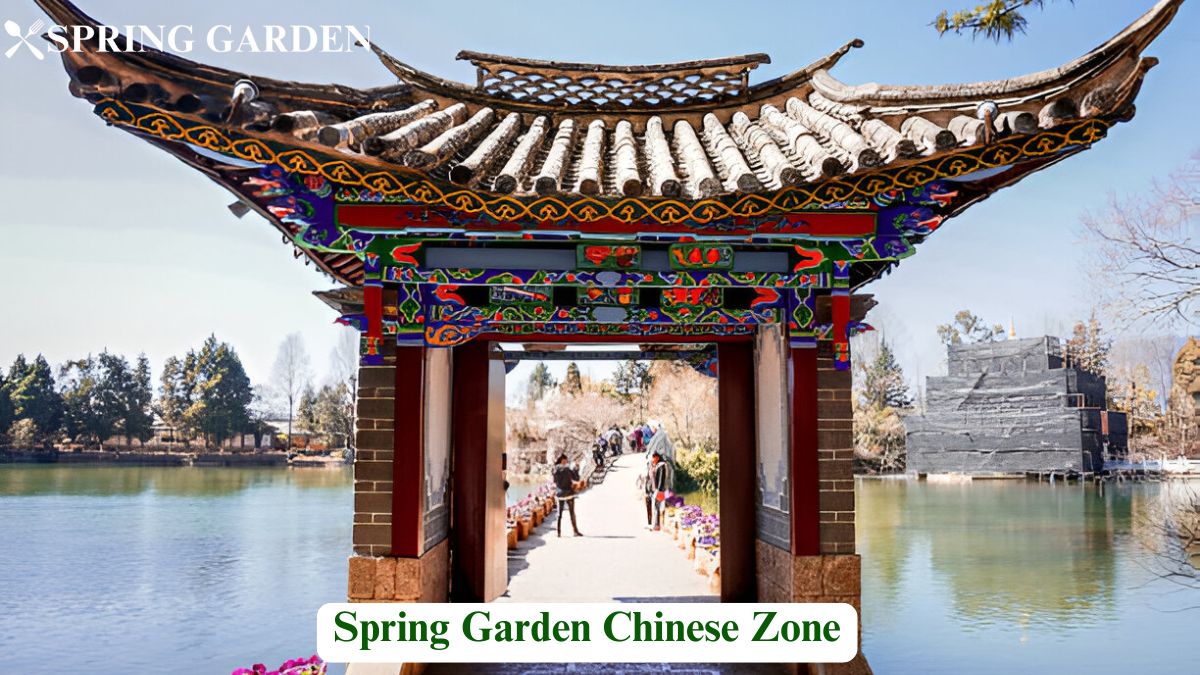Spring Garden Chinese Zone is a vibrant cultural destination that beautifully blends traditional Chinese aesthetics with modern attractions. This unique zone offers an immersive experience of China’s rich history, architecture, cuisine, and entertainment. Visitors can explore stunning gardens, savour authentic Chinese dishes, and participate in cultural events. Whether you’re a history buff, a foodie, or a traveller seeking a tranquil escape, Spring Garden Chinese Zone has something for everyone.
This article provides an in-depth guide to everything you need to know about Spring Garden Chinese Zone, from its history and architecture to its culinary delights and travel tips. Let’s dive in!
History and Origins of Spring Garden Chinese Zone
The Cultural Significance of Chinese Gardens
Chinese gardens have been an integral part of China’s cultural heritage for centuries. They symbolize harmony between humans and nature, reflecting Confucian, Taoist, and Buddhist philosophies.
- Symbolism: Rocks represent mountains, water symbolizes life, and plants signify growth and prosperity.
- Historical Roots: The concept of Chinese gardens dates back to the Han Dynasty (206 BCE – 220 CE).
- Design Principles: Balance, symmetry, and the seamless blending of architecture and nature.
The Development of Spring Garden Chinese Zone
Spring Garden Chinese Zone was established to create an authentic space where visitors can experience Chinese culture firsthand.
- Origins: Inspired by classical Chinese gardens such as Suzhou’s Humble Administrator’s Garden.
- Key Architects: Renowned Chinese landscape designers worked on its layout.
- Influence: It integrates elements from different regions of China, including Jiangnan and Sichuan.
Growth and Popularity Over the Years
Since its opening, Spring Garden Chinese Zone has evolved into a major cultural hub.
- Annual Visitor Count: Over 2 million tourists visit every year.
- Key Expansions: Introduction of new pavilions, restaurants, and entertainment zones.
- Economic Impact: Boosts local businesses and cultural tourism.
Architectural Marvels and Design
Traditional Chinese Architectural Elements
Spring Garden Chinese Zone features stunning examples of traditional Chinese architecture, including:
- Pagodas: Multi-tiered towers that serve as focal points.
- Bridges: Stone and wooden bridges over ponds symbolize transitions in life.
- Pavilions: Rest areas with intricate carvings and curved roofs.
Landscape and Feng Shui Influence
Feng Shui principles play a vital role in the garden’s layout.
- Water Elements: Ponds and streams enhance balance.
- Rock Formations: Artificial mountains create depth and contrast.
- Plant Selection: Bamboo, cherry blossoms, and lotus flowers add seasonal beauty.
Modern Enhancements While Preserving Tradition
Spring Garden Chinese Zone seamlessly blends tradition with modernity.
- Eco-Friendly Initiatives: Solar-powered lights and water recycling systems.
- Technology: Interactive guides and AR experiences enhance visitor engagement.
- Accessibility: Wheelchair-friendly pathways and multilingual signage.
Culinary Delights in Spring Garden Chinese Zone
Traditional Chinese Dishes You Must Try
Food lovers will find a paradise of authentic Chinese flavors.
| Dish | Region | Flavor Profile |
| Peking Duck | Beijing | Crispy, savory |
| Xiaolongbao | Shanghai | Juicy, umami-packed |
| Hot Pot | Sichuan | Spicy, aromatic |
Famous Restaurants and Street Food Vendors
- Golden Lotus Pavilion: Known for its imperial-style banquet dishes.
- Lantern Street Market: A lively hub for dumplings, skewers, and bubble tea.
- Tea House of Serenity: Offers a variety of premium Chinese teas.
Tea Culture and Specialty Drinks
- Tea Ceremonies: Experience the art of brewing and serving tea.
- Popular Teas: Oolong, Pu-erh, and Jasmine tea.
- Unique Drinks: Herbal infusions and fermented rice wine.
Cultural and Entertainment Attractions
Traditional Chinese Performances
Enjoy captivating performances that showcase China’s rich artistic heritage.
- Lion and Dragon Dances: Symbolizing prosperity and strength.
- Chinese Opera: Featuring elaborate costumes and storytelling.
- Acrobatics Shows: A thrilling display of flexibility and skill.
Workshops and Interactive Activities
Participate in hands-on cultural experiences.
- Calligraphy Classes: Learn the art of Chinese writing.
- Paper Cutting & Lantern Making: Traditional crafts for all ages.
- Cooking Workshops: Master the art of dumpling making.
Festivals and Seasonal Events
- Chinese New Year: Fireworks, parades, and lion dances.
- Mid-Autumn Festival: Mooncake tasting and lantern displays.
- Spring Blossom Festival: Celebrating cherry blossoms in full bloom.
Best Travel Tips for Visitors
How to Get There and Best Times to Visit
- Transportation: Easily accessible via public transit.
- Best Season: Spring and autumn offer the most scenic views.
- Avoid Crowds: Visit early in the morning or on weekdays.
Must-Know Etiquette and Cultural Tips
- Respect traditions: Avoid loud behavior in temples.
- Dress appropriately: Comfortable walking shoes recommended.
- Payment methods: Cash and mobile payment apps widely used.
Accommodation and Nearby Attractions
- Luxury Stay: Five-star hotels within walking distance.
- Budget Options: Guesthouses and hostels available.
- Nearby Attractions: Museums, temples, and night markets.
Conclusion
Spring Garden Chinese Zone is a treasure trove of history, culture, and culinary delights. Whether you’re marveling at its architecture, indulging in delicious food, or engaging in interactive workshops, every moment here is a step into China’s vibrant traditions. Plan your visit to explore this unique cultural paradise and immerse yourself in its enchanting beauty.
FAQs About Spring Garden Chinese Zone
What is the best time of year to visit?
Spring and autumn for the best weather and scenery.
Are there guided tours available?
Yes, English-speaking guides are available.
What are the must-try foods in the zone?
Peking duck, dim sum, and hot pot.
Is it family-friendly?
Yes, with plenty of activities for all ages.
Do you need to speak Chinese?
No, but basic phrases can be helpful.
How much time should I plan for my visit?
At least half a day to a full day.
Are there entrance fees?
Some attractions are free, while others charge a small fee.
Can you buy authentic Chinese goods here?
Yes, from tea to silk products.
What’s the best way to get around inside?
Walking or renting a bicycle.
Are there cultural etiquette rules to follow?
Yes, showing respect to elders and avoiding loud noises in temples.

